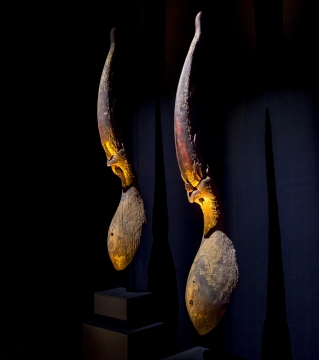Over the years, Count Thierry de Looz-Corswarem built up a remarkable collection of works of 18th and 19th century European decorative arts and Asian art, which he graciously donated to the King Baudouin Foundation in 2015.
His collection of European decorative arts comprises an ensemble of French furniture comprising armchairs, sofas and chests of drawers designed by some of the most prestigious cabinet makers of the second half of the 18th century, such as Porrot, Sené, Mariette and Dautriche. It also includes a unique collection of Empire-style clocks and objects in gilded bronze and silver.
It is a remarkable collection of 18th and 19th century European decorative arts and Asian art, destined to be exhibited as part of a public collection, in collaboration with the King Baudouin Foundation.
In addition to an ensemble of French furniture that includes armchairs, sofas and chests of drawers bearing the most prestigious hallmarks of the second half of the 18th century (Porrot, Sené, Mariette and Dautriche among others), the collection of European art from the 18th to the 20th centuries also hosts a unique repertoire of Empire-style clocks, gilded bronzes and silverware.
The silver tableware, some of which is already exhibited at the Museum of Art & History, is particularly remarkable. In this field too, Count de Looz assembled only the finest pieces: terrines, coolers, a bowl and baskets made by Jean-Baptiste Claude Odiot (1763-1850) can be seen alongside salt pots, a cream jug and a vegetable bowl made by Martin Guillaume Biennais (1764-1843).
Odiot and Biennais, both of whom were appointed as official silversmiths to Napoleon I, are the incarnation of prestigious silversmithing during the Consulate, the Directorate and the 1st Empire, an astonishing compromise between novelty and tradition, sobriety and abundance, as well as between restraint and flashy luxury. These craftsmen were endowed with an incredible talent that enabled them to adapt the ornamental vocabulary inherited from antiquity to the demands of their own time. The Asian art collection is principally from South-Eastern Asia and a selection of these pieces can be admired in the South-East Asia Room at the Art & History Museum. The Burmese collection has been enriched with a series of lacquered boxes and sculptures depicting Buddha. The Thai chofa on the other hand, which are architectural elements that traditionally decorate the extremities of temples and palaces, are impressive in the beautiful scenography that has been created by the chief curator.
Several of the pieces exhibited serve to establish a magnificent link between the various departments dedicated to Asian art at the Museum of Art & History. Thus, a unique series of paintings made by the Yao, a community spread over southern China, North Vietnam, Laos and northern Thailand, and a series of Chinese (Benjarong) porcelain destined for the Thai market illustrate the importance of economic exchanges in Asia.
